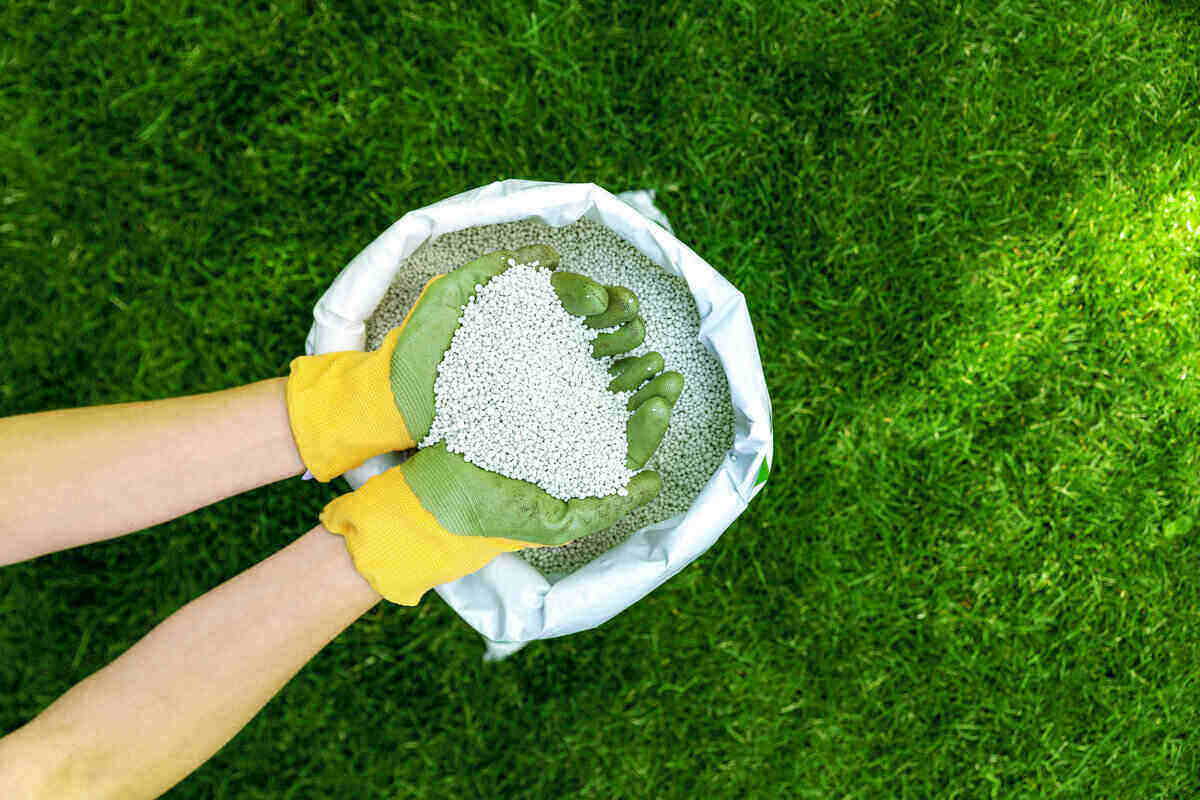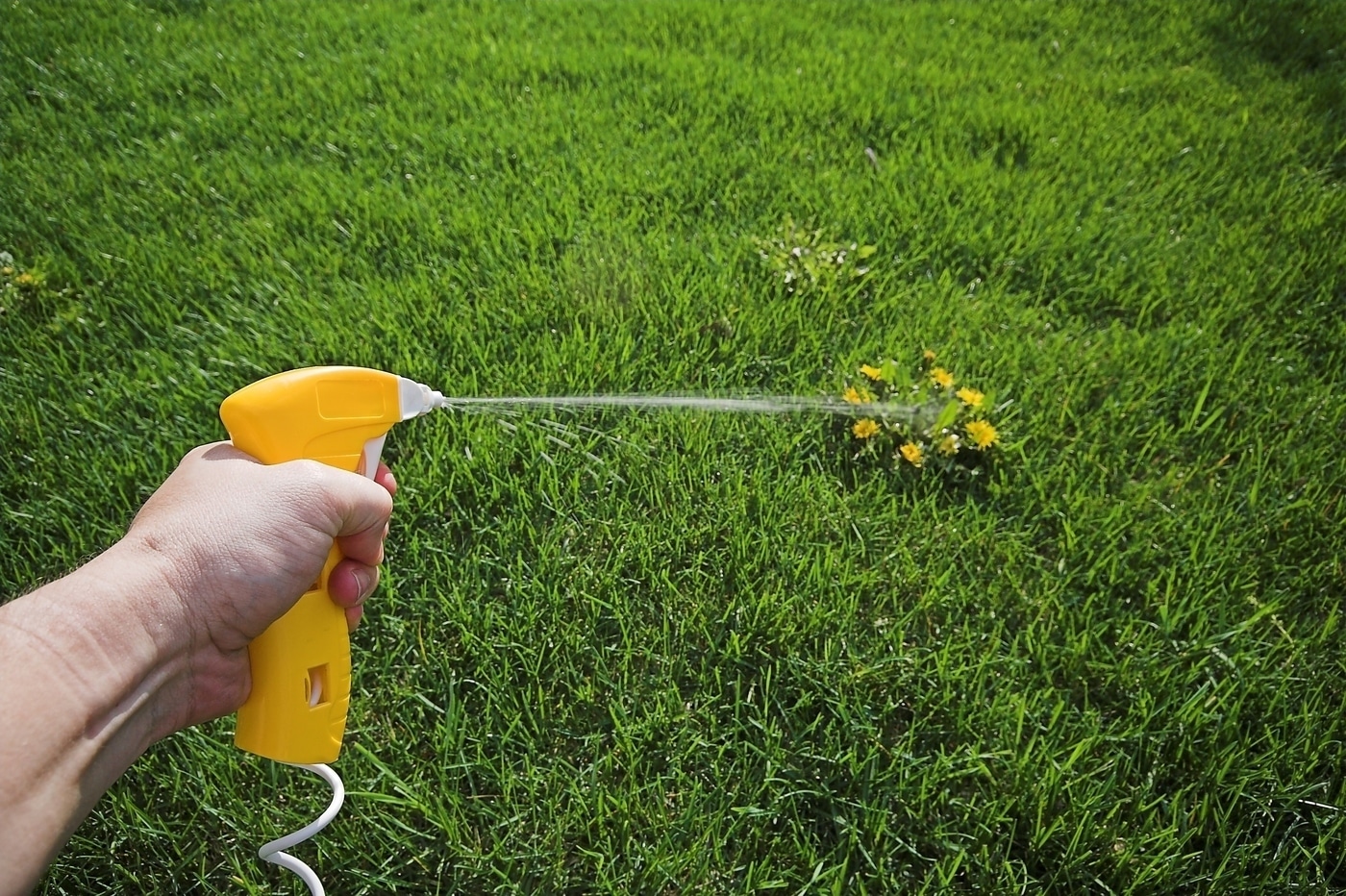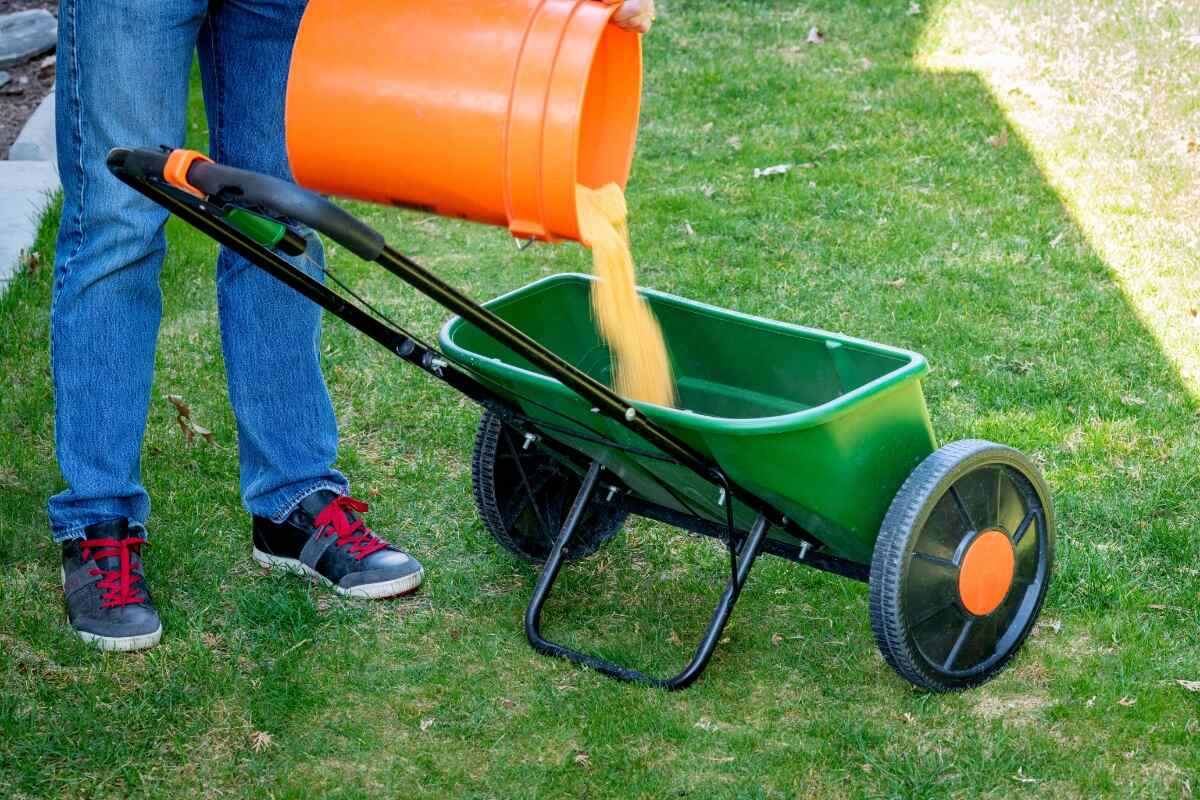
More and more gardeners and lawn owners strive to replace synthetic herbicides and fertilizers with natural alternatives to protect beneficial insects, the water table, and the soil’s precious microbiome. Is corn gluten meal (CGM) the all-natural weed and feed they want?
Some say it might be. Others say it’s not and that you should avoid it. We discuss all its pros and cons in this article, starting with the science behind the product and ending with how it’s used and the results it can deliver so that you can decide for yourself whether you want to try CGM instead of traditional synthetic weed and feed products.
- Corn Gluten Meal: From Lab Growth Medium to Patented Weed and Feed
- How Does CGM Kill Weeds?
- Weeds You Can Control With Corn Gluten Meal
- Corn Gluten Meal as Garden and Lawn Fertilizer
- How to Use Corn Gluten Meal as Weed and Feed
- How Effective Is Corn Gluten Meal as a Weed Killer?
- Where Can You Buy Corn Gluten Meal?
- Benefits of Using CGM as Weed and Feed
- Main Problems With Using CGM as Weed and Feed
- Alternatives for Natural Weed Control
- FAQ About Corn Gluten Meal Weed and Feed
Corn Gluten Meal: From Lab Growth Medium to Patented Weed and Feed
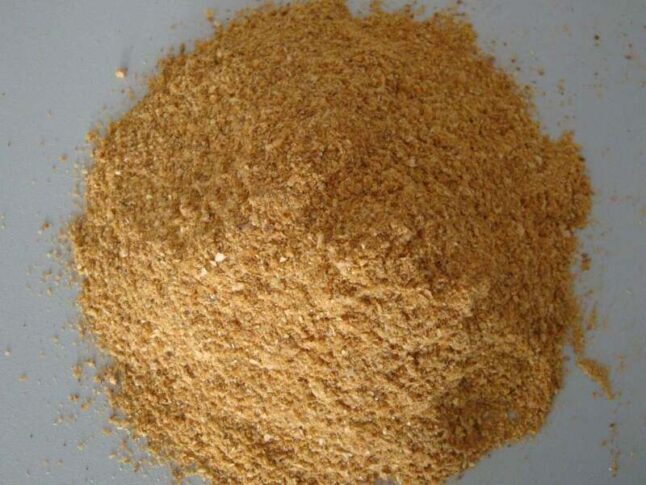
Corn gluten meal or CGM is a by-product of the wet corn-milling process that also creates corn starch, corn gluten feed, steep liquor, and germ oil meal.
Obtained from the corn kernels’ endosperm, CGM has about 60-65% protein content making it excellent as animal feed. It is also used as an ingredient in pet food and is the basis for a common flood flavoring called hydrolyzed vegetable protein. Corn gluten meal is non-toxic and safe for humans, animals, and non-targeted plants.
How did CGM go from livestock feed to herbicide and fertilizer? Like Newton and his fallen apple leading him to the law of gravity, corn gluten meal’s weed and feed properties were also a lucky break.
In 1986, Dr. Nick Christians from Iowa State University and a team of researchers studied the effects of Pythium fungi on creeping bentgrass, a typical golf course turf. They used some leftover corn meal to grow the pathogen. While conducting the experiments, they discovered that the corn gluten meal – the protein part of corn meal – inhibits root growth.
Further studies also showed a high nitrogen content of 9% to 10% of CGM’s weight. Root growth inhibition plus a good source of nitrogen? It was the perfect recipe for a new natural weed and feed product.
Dr. Christians patented the product in 1991, not as a weed and feed but as a pre-emergent herbicide. Even so, using it as a herbicide is the same as using it as a weed and feed since all corn gluten meal products release nitrogen into the soil after application.
By 1997, more than 15 manufacturers were licensed to produce and sell CGM products across the U.S. for use on turf and home gardens. This is how CGM got on the shelves with a “herbicide” label on the bag. Now, the question is: does it work or not? We must understand what CGM does to weeds to answer this question.
How Does CGM Kill Weeds?
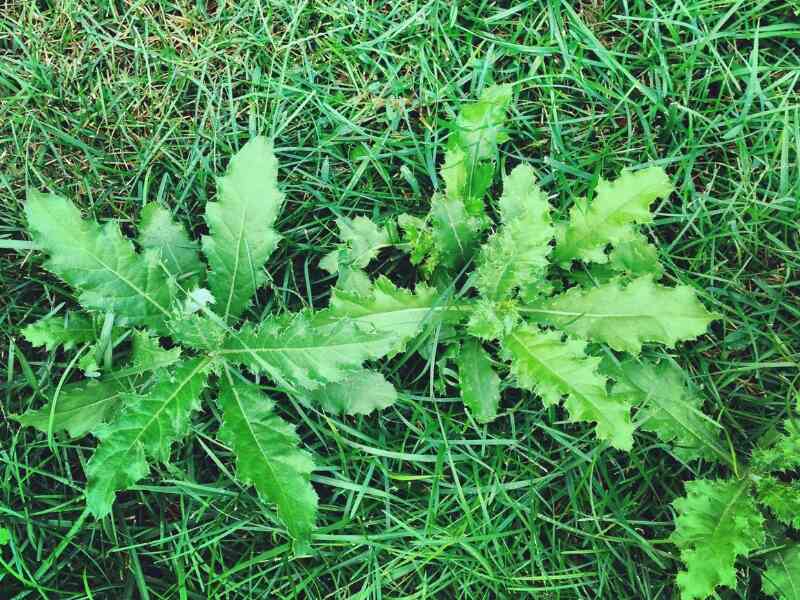
Corn gluten meal contains natural chemicals called corn peptides or protein hydrolysates that inhibit root growth. It is believed that peptides interfere with cell division and elongation in the developing roots of plants, including weeds.
This disruption leads to reduced root growth and ultimately prevents the establishment of young weed seedlings. CGM’s strategy is similar to chemical pre-emergent herbicides like dithiopyr, benfluralin, and pendimethalin, which also prevent weeds by inhibiting root growth.
CGM does not stop weed seeds from germinating. Weed shoots do spring out of their seeds. But if the soil is treated with CGM at the time of seed germination, shoots won’t develop healthy roots and will eventually die.
Weeds You Can Control With Corn Gluten Meal
CGM can be successfully used against grassy and broadleaf weeds alike. It’s often spread to control:
- Crabgrass
- Smartweed
- Dandelions
- Redroot pigweed
- Lambsquarters
- Purslane
- Common Bermudagrass
- Invasive creeping bentgrass
Since it’s ineffective on already-developed root systems and only works on seedlings while forming their first roots, corn gluten meal is meant for:
- Annual weeds
- New generations of perennial weeds sprouting from seeds
It’s not a selective weed killer and will equally affect weed and grass seeds. Avoid applying it in the fall if you plan to overseed the lawn. Only use CGM on established turf and plants, not on a newly planted lawn or garden.
Corn Gluten Meal as Garden and Lawn Fertilizer
As mentioned before, corn gluten meal also brings a 9% to 10% nitrogen content to the garden, making it an excellent natural fertilizer. If you spread 10 pounds of CGM on the soil, you add 0.9 to 1 pound of nitrogen (which is about the nitrogen recommendation for turfgrass fertilization).
CGM doesn’t contain phosphorus or potassium and has an NPK of 9-0-0 or 10-0-0. The lack of phosphorus is a big plus in states with phosphorus bans, like Illinois, Michigan, New York, New Jersey, and Washington, and locations prone to runoff.
The nitrogen in CGM is a slow-release form, preventing root burn. After application, it releases gradually into the soil for 3 to 4 months.
How to Use Corn Gluten Meal as Weed and Feed

Corn gluten meal is natural, safe for kids and pets, and feeds the soil with slow-release nitrogen. Now let’s see how exactly you use it as weed and feed. For starters, it’s a product that requires some planning and preparation.
Planning and Preparation
Good timing is critical when using corn gluten meal as a weed killer. Once the new weeds have developed roots, not only does the CGM become ineffective as a herbicide, but it also supplies nitrogen for the weeds to grow fast and strong.
Estimate the Weed Germination Time
As with any other pre-emergent herbicide, CGM must be applied before the weed seeds germinate. This generally means:
- Early April to early May in the North
- Mid-March in the South
Another way to estimate the application time is to measure the soil temperature with a soil thermometer. When it reaches 50°F at about 4 inches deep, that is an excellent moment to apply corn gluten meal to prevent crabgrass, which germinates at 55°F.
Follow the Weather Forecast for a Dry Spell
Corn gluten meal needs water to activate its root-killing chemicals. Once that’s done, it requires a dry period of at least 1-2 days to do its job. If it rains and the soil gets moist, the weeds can develop new roots, and the application is a bust. Wait to apply CGM until the forecast shows at least 48 hours without rain.
Consider Turfgrass and Other Desirable Plants
You also need to consider the desirable plants in your yard:
- Don’t apply CGM in August if you plan to overseed the lawn in the fall.
- Spread it in your garden only after plant transplants establish roots and seedlings develop true leaves.
CGM is non-selective, meaning it will inhibit root growth of anything newly planted, including your lawn, flowers, and other desirable plants.
Get the Right Product
Buy corn gluten meal with 60 to 65% protein content labeled as herbicide or pre-emergent weed killer. Don’t use food-grade corn meal or corn gluten feed, as they are less protein-rich and don’t work as herbicides.
Store it in a dry, cool, shaded place until use.
Weed and Feed Application Rate
The standard application rate for killing weeds is 20 pounds per 1,000 square feet for CGM with 60 to 65% protein content. This is the minimum amount required for corn gluten meal to work as a herbicide. Dr. Karl Danneberger, professor of Turf Science at Ohio State University, says tests show that using 40 pounds per 1,000 sq. ft. offers even better results.
Fertilizer Application Rate
If you’re using corn gluten meal only as a fertilizer, apply 10 pounds of CGM per 1,000 sq. ft. to ensure 1 lb of nitrogen. Remember, CGM doesn’t contain phosphorus and potassium; you must add them separately if a soil test recommends it.
How to Apply Corn Gluten Meal Step By Step
Step 1: Remove all grown weeds
CGM has no effect as a herbicide on weeds already grown, but it will feed them with nitrogen. So, hand-pull all the weeds in your sight before applying corn gluten meal.
Step 2: Rake the soil to improve the spread
Corn gluten meal, whether as a powder, granules, or pelletized, must get a bit into the topsoil, closer to weed seeds, to do its job. If necessary, dethatch the lawn and rake the soil before application to break the crust and improve its access.
Step 3: Spread the corn gluten meal
Use a spreader to apply the herbicide. Check the application rate. You might have a garden spreader that doesn’t allow a 20-pound rate since it’s higher than most synthetic herbicides require.
Don’t worry, it’s an easy fix! If the spreader has a lower rate, make more rounds to ensure 20 pounds per 1,000 sq. ft. This method is even better since 2 or 3 rounds ensure a more uniform application.
Step 4: Lightly water the treated area
Spread ¼ inch of water with a garden hose, nozzle, or sprinklers across the area to activate the corn gluten meal.
How Effective Is Corn Gluten Meal as a Weed Killer?
Even Dr. Nick Christians and his team show restraint when discussing the effectiveness of corn gluten meal as a weed killer. It has proven potential, but so many factors influence results that it is difficult to guarantee a good outcome.
With all the requirements checked (the right timing, the right application rate, and the right weather conditions), studies show a first application prevents germination for 40 to 60% of weed seeds. Long-term results are much better, showing that repeatedly using CGM for 2 to 3 years brings the success rate to over 90%.
Where Can You Buy Corn Gluten Meal?
You can buy corn gluten meal herbicides, most commonly in granular form, at local nurseries and feed stores and specialized websites selling bioherbicides, such as Arbico Organics, Jonathan Green, and GardenSupplyGuys. Corn gluten meal weed killers are also available online from home & garden and retail stores. Here are some popular products:
- Amazon – Jonathan Green 11591 Corn Gluten Lawn Fertilizer
- Home Depot – Purely Organic Weed and Feed Lawn Food
- Walmart – Old Cobblers Farm Corn Gluten All-Natural Weed Prevention
- Lowe’s – Preen Natural Vegetable Garden Weed Preventer
Other popular brands are Espoma, Sustane, Safer Brand, and Lawnbright.
Corn gluten meal is commercially available in powder, granular, and pelletized forms and costs from $1.50 to $4 a pound, depending on brand and type. Liquid forms like Preen, Green It, and Gluten-8 OLP are available at $50 to $65 per gallon.
Benefits of Using CGM as Weed and Feed

It’s not easy to reap the benefits of corn gluten meal weed and feed, but it might be worth the trouble for folks working on protecting their garden from toxic chemicals and pollutants. Here are the top advantages of using it:
Natural and safe for kids and pets: CGM is one of the few herbicides you can use with kids and pets in your yard without worrying about it. Some people are allergic to substances in corn, but cases are rare.
Improves soil water retention ability: CGM’s high protein content captures more water into the soil.
Protects the soil microbiome: Grass, veggies, flowers, and trees all need soil microbes to access nutrients in the ground. While chemical herbicides often kill them, CGM is harmless for the little but very useful buggers.
Natural source of nitrogen: There’s a second way to use CGM for weed control, and that is as a fertilizer. Periodically applying 0.5 to 1 lb of nitrogen on your lawn helps the grass grow healthy and dense and smother weeds into oblivion.
Cumulative effect: The more applications you make, the better the results you get. Corn gluten meal reaches its top effectiveness after 2 or 3 years of annual applications.
Does not change soil pH: Corn gluten meal does not affect the soil pH, while synthetic fertilizers acidify soil (ammonium-based formulas are the most acidic and nitrate-based the least).
Safe for other plants: Corn gluten meal damages only germinating seeds without hurting already established plants. In fact, for rooted plants, it works as a fertilizer.
Main Problems With Using CGM as Weed and Feed
The main downside of using CGM as weed and feed is that many things can go wrong and make the herbicide ineffective:
Timing: If you miss the germination period and weed sprouts develop roots, you’ll feed them with fertilizer instead of killing them.
Soil temperature: Some studies show CGM is less effective in warm soils, over 65°F, and renders better results in the cool-season grass zone than in the transition and warm-season zones.
Rainy springs and autumns: If it rains too soon after CGM is activated in the soil, weeds will have enough moisture to grow new roots and survive the treatment. Most of the Western U.S. has rainy springs, making applying CGM extremely difficult.
Confusing the product: Some homeowners use corn meal or corn gluten feed as herbicide thinking it’s the same thing as corn gluten meal. It’s not. Corn gluten feed has only 20 to 22% protein, and corn meal even less. It’s the protein content that makes CGM a herbicide. Only use CGM sold as a pre-emergent weed killer or herbicide with 60 to 65% protein content.
Spread amount: If you spread less than 20 pounds of CGM per 1,000 sq. ft., the herbicide will have little to no effect on weed sprouts.
High cost: The average price ranges from $1.50 to $4 per pound, making long-term use a budget problem. With a 3,000 sq. ft. yard, you can expect to pay $90 to $240 for one application and $180 to $480 for two a year.
Not certified organic: About 90% of the corn grown in the U.S. is GMO (genetically modified organisms), making it hard for manufacturers to get their natural corn gluten meal herbicide classified by the OMRI as safe for organic gardening.
Nitrogen excess: When applying CGM, you add 10% nitrogen. With 20 lbs of CGM per 1,000 sq. ft., you add 2 lbs of nitrogen. If you use a 40-pound rate, that’s 4 lbs of nitrogen per 1,000 sq. ft. It’s natural and slow-release, but it can still cause problems for shaded gardens and lawns prone to nitrogen burn. The standard recommendation for cool and warm-season grasses is to apply 4 to 6 lbs of nitrogen annually in multiple applications of 0.5 lb (fast-release N) to 1 lb (slow-release N).
Alternatives for Natural Weed Control
If corn gluten meal is outside your budget of money and time, there are other ways to get rid of weeds in your lawn and garden that cost less and have more reliable results. You can use them to replace the corn gluten meal or together with CGM applications to speed up results.
Apply mulch. A layer of 3 to 6 inches of dry leaves, shredded bark, wood chips, mint hay, or even yard waste spread on veggie and flower beds keeps weeds from germinating.
Keep the turf healthy and dense. Apply 4 to 6 lbs of nitrogen per year in multiple applications of 0.5 to 1 lb each, overseed the lawn in the fall, aerate, and dethatch annually. A healthy lawn is the best way to control weeds because it’s harder for them to compete with thick, thriving grass.
Use natural post-emergent herbicides: While corn gluten meal seems to be the only organic pre-emergent with good results, there are many natural post-emergent weed killers. Here are some common products available online:
- Amazon: ECO Garden PRO – Organic Vinegar Weed Killer
- Walmart: Green Gobbler Vinegar Weed & Grass Killer
- HomeDepot: BONIDE Burnout
- Lowes: Natria Grass & Weed Control With Root Kill Herbicide
There are also a few natural homemade herbicides you can try. Remember that natural can also sometimes be toxic for the soil if used in too-large quantities.
For other weed and feed options, check out our list of the best weed and feed products you can buy at the store. Our top picks even include one product containing corn gluten meal!
FAQ About Corn Gluten Meal Weed and Feed
Yes, it can be used in weed prevention for both broadleaf and grassy weeds. Corn gluten meal damages seedlings’ roots and prevents them from developing a healthy root system. It does not kill weeds that have already sprouted and established roots.
Historically used as livestock feed, corn gluten meal has recently become popular in gardening and lawn care as a natural weed killer and slow-release nitrogen fertilizer.
No. Corn meal is a food-grade product made by grinding corn and used to coat fish, meats, and chicken before cooking or as flour in bread, muffins, and pancakes. Corn gluten meal is a component of corn meal, made through wet-milling, used mainly for farming and gardening.
Yes, corn gluten meal can be used safely in flower beds with established perennials or annuals with established roots. Check out our guide on how to get rid of weeds in flower beds for natural and chemical solutions. You also can jump straight into product recommendations in our guide on the best weed killers for flower beds.
Enjoy an Organic, Weed-Free Lawn!
The pros and cons are deadlocked in a tie when it comes to using corn gluten meal as weed and feed. If you feel strongly about keeping your lawn and garden chemical-free, go for it! As long as you follow the instructions in this article, it could be a huge success for you.
And don’t hesitate to ask a pro for advice and help if natural herbicides and fertilizers give you a headache. LawnStarter has the best lawn experts around. Contact a local lawn care professional specializing in organic products and enjoy a healthy, weed-free lawn today!
Main Photo Credit: knowlesgallery / Canva Pro / License

